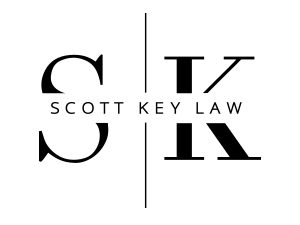☕ The Coffee Note That Shaped My Trial Philosophy
Negotiation Lessons from Criminal Defense That Elevate Civil Practice
I couldn’t believe I’d made such a boneheaded move.
There I was—wedged into a slow-moving Starbucks line, about to be late for a meeting with a prosecutor. The mission? Negotiate a favorable outcome before my client’s case hit the grand jury.
So I improvised:
“Grabbing coffee. What’s your order?”
He responded. I showed up late—but with both drinks in hand.
While his contact was open on my phone, I typed his coffee preference into the notes. That tiny act became a bigger strategy: I started cataloging the details that make people feel seen—birthdays, kids’ names, anniversaries, favorite orders.
Turns out, the art of negotiation starts long before anyone mentions a statute.
1. Relationships Build Leverage—in Every Arena
In criminal defense, you quickly learn you’ll face the same adversaries repeatedly. That’s true in civil litigation too—especially in niche practices like land development.
Short-term victories lose value if they cost long-term trust. Whether you’re opposing counsel in a rezoning fight or working with local officials on a contested variance, relationships are your leverage.
I strive to be the kind of lawyer people respect and enjoy working with. Empathy isn’t fluff—it’s strategy.
2. Cases Are Made of People, Not Just Paper
Criminal work taught me to showcase the whole human behind the charges. Those life portfolios I compiled—white binders full of personal context—weren’t just courtroom props; they were bridges to understanding.
And I use the same storytelling in civil trial work.
In land use disputes, for instance, the story isn’t just zoning codes—it’s the livelihood of families, the impact on communities, the evolution of neighborhoods. Humanizing your client builds credibility—and influence.
3. Timing Is Tactic
The earlier you engage, the more control you have. Criminal cases taught me the importance of pre-indictment leverage—and that concept absolutely translates to civil litigation.
Before discovery kicks in, before tempers flare—early clarity can drive resolution. Whether I’m asserting qualified immunity under 42 USC § 1983 or drafting a Rule 37 letter, I aim to be the calm voice in the room… early and often.
4. Ego Is Expensive
In my early years, I fell into unnecessary rivalries with other young attorneys. And while some of those courtroom battles ended in my favor, I realized something better: a quiet dismissal beats a loud acquittal.
In civil practice, that lesson translates perfectly.
Firing off aggressive letters may impress the client copy list—but it rarely moves the needle in negotiations. Ego-driven posturing wastes time. I prefer clarity, courtesy, and precision. A smart lawyer knows when to speak softly and carry airtight documentation.
5. Negotiation Is a Long Game—So Play It Well
Sometimes you can settle. Sometimes you can’t. But civil or criminal, process matters.
You want opposing counsel to know you’re methodical, fair, and prepared to fight when needed. That kind of reputation isn’t built overnight—it’s earned through consistency, transparency, and respect.
And yes, sometimes, through a well-timed espresso.
📚 Sidebar: Resources to Deepen Your Trial Strategy
Curated tools for building relationships, refining negotiation, and winning cases with integrity
- Negotiate to Win – ABA’s Practical Guide for Lawyers
Constructive tips from legal pros on adapting negotiation styles and earning trust. - Legal Negotiation Skills 101 – Martindale-Avvo
Breaks down emotional intelligence, strategy, and rapport-building essentials. - Five Golden Rules of Legal Negotiation – Expert Negotiator
A compact blueprint for maximizing leverage in civil and criminal matters. - Strengthening Client Connections – National Law Review
Strategies to build lasting client relationships and add everyday value. - Ten Rules to Improve Your Trial Wins – Plaintiff Trial Lawyer Tips
From simplifying your case to appealing to juror self-interest, these tips align with meticulous courtroom storytelling.
Final Thought: Civility Wins Cases
Law isn’t just argument—it’s relationship management. I’ve found more success through kindness and quiet force than through theatrics.
As Twain put it:
“Never wrestle with a pig. You both get dirty, and the pig enjoys it.”
And as Proverbs says:
“A gentle answer turns away wrath.”
Whether defending a criminal case or challenging a land development petition, my aim is the same: prepare deeply, communicate respectfully, and negotiate like the long game matters—because it always does.


